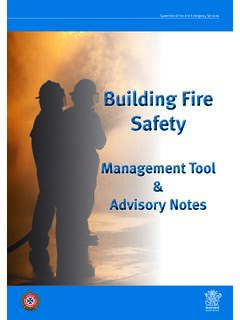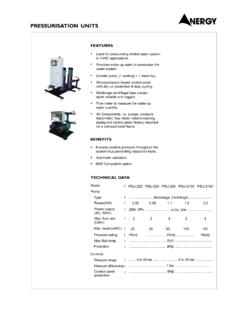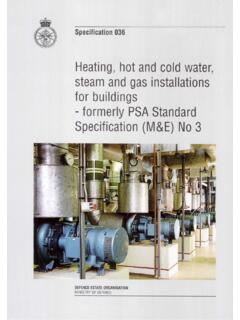Transcription of Normal Operations System Manual - Majestic Software
1 1 MJC-8 Q400 PILOT/PRO EDITIONS Version Normal Operations System Manual Copyright Majestic Software 2012-2015 2 Contents 1. Introduction .. 5 2. General .. 5 3. Cockpit Layout .. 6 4. Air Conditioning, Bleed Air and Pressurization System .. 8 Pressurization subsystem .. 9 Bleed Air Subsystem .. 12 Air Conditioning Subsystem .. 13 5. Auto Flight System .. 15 AFCS Data Flow .. 16 AFCS Modes .. 16 Pitch Auto Trim for Flaps extension .. 23 6. Audio and Radio Management System (ARMS) .. 25 ARCDU pages .. 26 ARCDU Mode Selector .. 29 ATC ID Key .. 29 Tune Knobs .. 29 Function keys .. 29 Passenger announcement management keys .. 30 Volume control knobs .. 30 ARCDU Emergency Mode .. 30 Standby COM panel .. 31 7. Electrical System .. 32 Electrical System Power Sources .. 34 The Auxiliary Power Unit (APU).
2 35 8. Flight Controls .. 38 Yaw channel .. 39 Roll channel .. 39 Spoilers subsystem .. 41 Pitch channel .. 42 3 9. Fuel System .. 44 Fuel System Controls .. 44 Fuel System Indicators .. 45 10. Hydraulic System .. 49 11. Ice and Rain protection System .. 52 Airframe Anti-ice Protection .. 55 Propeller de-icing .. 55 Engine intake heaters .. 56 Pitot static and probe 56 Windshield and Pilot side window heaters.. 56 Side windows de-misting.. 56 Rain protection.. 57 12. Electronic Instruments System .. 58 EIS Controls .. 60 Primary Flight Displays .. 62 Multi Functional Displays .. 64 Engine Display .. 66 Electronic Standby Instrument .. 66 13. Landing Gear .. 68 14. Lights .. 69 Exterior lighting .. 69 Flight Deck lighting .. 71 15. The Powerplant System .. 73 The Engine System .. 73 The Propeller System .
3 73 The powerplant controls .. 74 The Condition and Power Levers .. 74 The Engine Control Panel .. 77 The Engine Start Panel .. 78 The Propeller Control Panel .. 79 The Powerplant indications .. 81 16. Navigation .. 84 The Navigational Sources .. 85 4 VOR/ILS/DME receivers: DME hold function.. 86 The ADF receivers .. 87 The Marker Receivers .. 88 Mode S ATC receivers/transmitters .. 89 Traffic Collision Avoidance System (TCAS) .. 90 The TCAS control page on the ARCDU .. 91 The TCAS related EFIS annunciations .. 93 Enhanced Ground Proximity Warning System (EGPWS) .. 96 The EGPWS Terrain overlay .. 98 The EGPWS Warnings .. 99 Weather Radar (WXR) .. 100 Flight Management Systems (FMS) .. 102 Sensors and Navigational 103 Direct To Navigation .. 106 NAV Page .. 107 Flight Plan .. 109 FPL WIND page.
4 113 LIST function .. 114 Procedures .. 115 Maneuvers .. 120 VNAV function .. 124 ETP/PNR Pages (PRO/TRAINING editions only) .. 128 DEFINE WPT (PRO/TRAINING editions only) .. 131 FMS related MFD and PFD indications.. 133 5 1. Introduction The Dash 8-Q400 is a high wing airplane manufactured by Bombardier Canada. It is powered by two 5071 shaft horsepower PW 150A turboprop engines. Each engine drives a six bladed propeller. The Dash 8 is a two pilot transport category airplane approved for instrument flight and operation to a maximum altitude of 25,000 feet. The airplane has an Active Noise and Vibration Suppression (ANVS) System . The airplane seats up to 78 passengers and two or three cabin crew members in addition to the pilot, copilot, and flight observer. It has a maximum take-off weight of 65,063 lb (29,574 kg).
5 2. General The fuselage (Figure ) is constructed in three main parts: Forward Center Aft The forward section includes the flight deck, which contains the pilot controls, instruments, and indications. Circuit breaker panels are located behind the pilot's and copilot's seats. There is a forward baggage compartment on the right forward part of the fuselage, and an aft baggage compartment forward of the aft pressure bulkhead. Both baggage doors open outwards and can only be opened from the outside. The passenger compartment doors and one type II/III exit can be opened from either the inside or outside. 6 Figure Fuselage. 3. Cockpit Layout 7 The cockpit layout of the Dash-8 includes all the controls and indications required for the Normal and emergency operation of the airplane.
6 The name and location of the control panels are depicted at the Figure Figure Control panels 8 4. Air Conditioning, Bleed Air and Pressurization System Air Conditioning, Bleed Air and the Pressurization System have the following functions: Pressurization of the aircraft s interior Providing the pressurized air for the airframe deicing Environmental control in the cabin and the cockpit Avionics cooling The controls and indications, pertaining to this System are depicted at the Figure Figure Air System Controls and Indicators 9 Pressurization subsystem The airplane is pressurized by the engine bleed air supplied and distributed by the air-conditioning System . Pressure is maintained and controlled by the cabin pressure control System which governs the rate of outflow from the pressurized areas of the airplane.
7 An aft outflow valve primarily controls the outflow of air, and is assisted by two safety valves. Figure shows the pressurized areas in the aircraft. Figure Pressurized areas The aft outflow valve is controlled from the Cabin Pressure Control panel on the flight deck Overhead panel. The aft outflow valve and the aft safety valve are located on the aft pressure dome. A forward safety outflow valve is located on the forward pressure bulkhead, and can be controlled from the pressurization panel or the copilot console. Figure shows the pressurization controls. 10 Figure Pressure controls and indications 11 Normal OPERATION: The pilot is required to pre-set the landing field altitude using the Landing Altitude Selector, while still on the ground or before starting the descend at latest.
8 With the mode selector at Auto, the operation of the System is completely automated in order to achieve the field altitude on landing. Note: Bleeds must be selected ON for the most of the flight for the pressurization System to operate normally. Pressurization of the aircraft using the APU bleed air is not possible. The required landing field altitude should only be set on the pressurisation panel if landing bleeds on. If the bleed are left ON for landing, +500 ft should be added to the landing field altitude. Cabin diff has to be below before switching to MIN/OFF and has to show 0 before 500ft RA at the latest. 12 Bleed Air Subsystem The bleed air subsystem is responsible for supplying the unconditioned bleed air to pressurize the aircraft interior, provide the aircondition and deice the airframe.
9 The Bleed Air is supplied by each engine via Low Pressure (LP) and High pressure ports (HP). When the bleed switches are selected ON, the LP or HP will be operated automatically, based on the available airflow pressure (see Figure ). Normal OPERATION: The bleed switches should be selected OFF if a reduced power takeoff is planned, otherwise the bleeds can be left ON. The Bleed Flow Mode in this case has to be selected to MIN. The bleed should be then selected back to ON after takeoff as soon as practical. Please, note that the bleeds must be ON for the structural antiice to operate. It is a standard practice to keep the bleeds OFF for landing, to increase the engine performance in a case of a possible Go Around. The Recirculation Fan switch is normally always left in the RECIRC position. Sudden appearance of the cabin pressure warning light will most likely indicate the bleed selectors have been left OFF, or the System left in the DUMP mode.
10 Correct the problem before continuing the climb. 13 Air Conditioning Subsystem The air conditioning System conditions the bleed air to the proper temperature and humidity and delivers it to the air distribution System for environmental control of the cabin and flight deck. The System controls are shown at the Figure Normal OPERATION: Operation of the air-condition System is automatic when the packs are selected to Auto. The temperature can be set independently for the flight deck or the cabin using the temperature selectors, and the duct temperature/cabin temperature verified on the temperature indicator by switching the temperature indicator selector to the appropriate position. On the ground with engines off, the air-condition can be utilized with the APU bleed air, in this case however the Bleed switches must be left in the OFF position.



